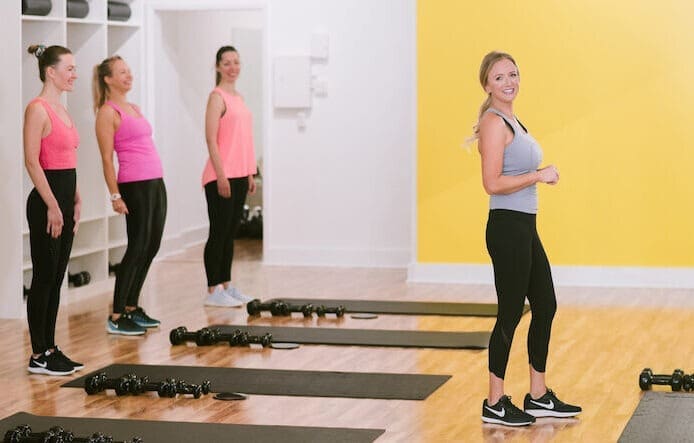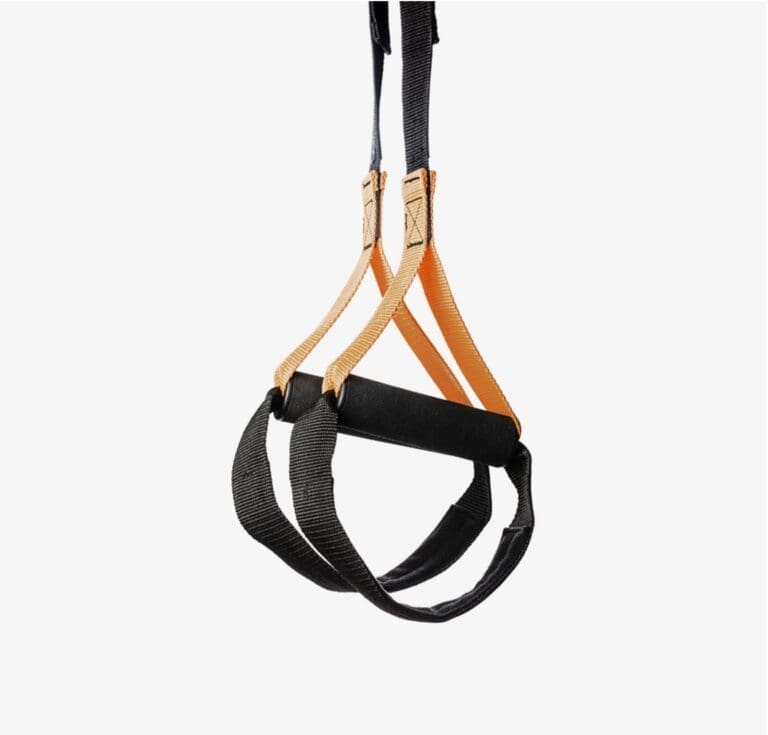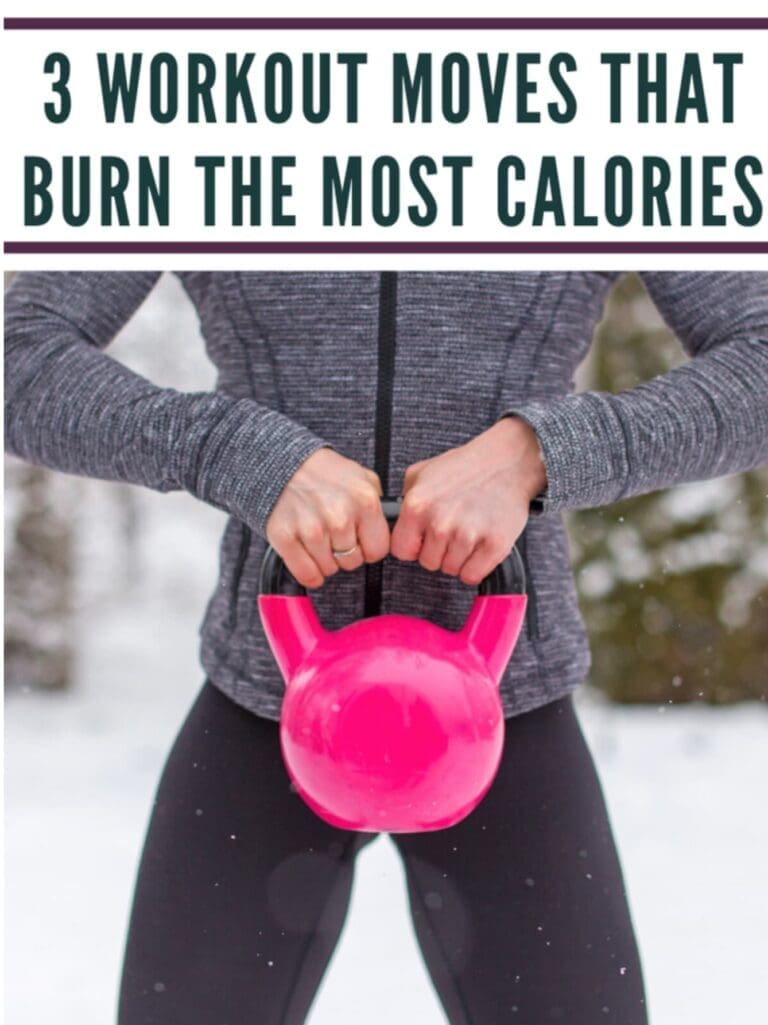We independently review everything we recommend. When you buy through our links, we may earn a commission.
Learn more›
Hey there! Holly Roser here from our San Mateo studio. As a certified personal trainer with over a decade of experience, I’ve helped numerous clients navigate the challenges of osteoporosis through targeted strength training. Today, I’m excited to share a comprehensive guide that will help you understand how to effectively combat and manage osteoporosis through exercise.
Understanding Osteoporosis: More Than Just Weak Bones
Osteoporosis isn’t just about fragile bones – it’s about maintaining your independence and quality of life. Recent research has shown just how powerful exercise can be in fighting this condition. A groundbreaking study published in the Journal of Bone and Mineral Research found that progressive resistance training can increase bone mineral density by up to 3.8% in postmenopausal women, which is remarkable considering most treatments simply aim to prevent further loss (Thompson et al., 2020).
The Silent Nature of Bone Loss
Many people don’t realize they’re losing bone density until they experience a fracture. Think of your bones like a savings account – you need to make regular deposits (through exercise and nutrition) to maintain a healthy balance. By age 30, most people reach their peak bone mass, and after that, it’s crucial to minimize withdrawals from this bone bank.
Risk Factors and Early Warning Signs
- Family history of osteoporosis
- Being female, particularly post-menopause
- Small frame or low body weight
- Smoking or excessive alcohol consumption
- Sedentary lifestyle
- Certain medications (especially corticosteroids)
- Poor nutrition, particularly low calcium intake
The Science Behind Strength Training and Bone Health
At our private training facility, we’ve seen firsthand how strength training transforms bone health. When you engage in resistance exercises, you’re not just building muscle – you’re literally reconstructing your skeleton. This process, known as bone remodeling, is fascinating: your bones respond to mechanical stress by becoming stronger and denser. It’s similar to how a tree grows stronger where it faces the most wind!
The Biological Process of Bone Remodeling
Let’s dive deeper into how strength training actually builds stronger bones. When you perform weight-bearing exercises, you create microscopic stress on your bones. This triggers specialized cells called osteoblasts to build new bone tissue. Meanwhile, other cells called osteoclasts remove old bone tissue. This constant cycle of breakdown and rebuilding is what keeps your bones strong and healthy.
Types of Stress That Build Bone
- Compression forces (like in squats and deadlifts)
- Tension forces (from muscle pulling on bone)
- Torsional forces (rotational movements)
- Impact forces (from controlled jumping or stepping)
Comprehensive Exercise Program Design
Phase 1: Foundation Building (Weeks 1-4)
Before diving into any exercise program, especially if you have osteoporosis, it’s crucial to get clearance from your healthcare provider. Ready to begin? Book your free consultation with us to create a personalized plan.
During this initial phase, focus on mastering proper form and building body awareness. Start with bodyweight exercises and light resistance to develop proper movement patterns.
Foundation Exercises:
- Wall push-ups (2-3 sets of 8-12 reps)
- Stand arm’s length from wall
- Place hands shoulder-width apart
- Keep core engaged throughout movement
- Supported squats (3 sets of 10 reps)
- Use chair or counter for balance
- Focus on proper knee alignment
- Maintain neutral spine
- Standing hip hinges (3 sets of 10 reps)
- Practice with lightweight dowel
- Emphasis on hip movement
- Keep back straight
Phase 2: Progressive Loading (Weeks 5-12)
Once you’ve mastered the basics, it’s time to gradually increase the challenge. A recent study in the International Journal of Exercise Science showed that progressive loading is crucial for continued bone density improvements (Martinez et al., 2023).
Progressive Exercises:
- Dumbbell squats (3 sets of 12 reps)
- Start with light weights (2-5 lbs)
- Progress weight every 2-3 weeks
- Maintain form learned in Phase 1
- Romanian deadlifts (3 sets of 10 reps)
- Begin with body weight
- Add light dumbbells when ready
- Focus on hip hinge pattern
- Standing shoulder press (3 sets of 12 reps)
- Start with very light weights
- Keep core engaged
- Avoid arching back
Phase 3: Advanced Training (Months 4-6)
For those who have built a solid foundation, more challenging exercises can be introduced under proper supervision.
Advanced Exercise Program:
- Barbell squats (4 sets of 8-10 reps)
- Rack pulls (3 sets of 8 reps)
- Push-ups on elevated surface (3 sets of 10 reps)
- Single-leg exercises (3 sets of 8 per side)
- Core stabilization work (various exercises)
Form and Technique Mastery
The Squat: Foundation of Lower Body Strength
Perfect squat form is crucial for both effectiveness and safety. Here’s your step-by-step guide:
- Stand with feet shoulder-width apart
- Keep chest up, shoulders back
- Initiate movement by pushing hips back
- Lower until thighs are parallel to ground (or as comfortable)
- Push through heels to return to starting position
Nutrition: The Foundation of Strong Bones
Essential Nutrients for Bone Health
While exercise is crucial, nutrition plays an equally important role in building and maintaining strong bones. Here’s your comprehensive guide to bone-building nutrition:
Calcium: Your Bone’s Building Block
- Daily Requirements:
- Women 51-70: 1,200mg
- Men 51-70: 1,000mg
- All adults 71+: 1,200mg
- Best Food Sources:
- Dairy products (yogurt, milk, cheese)
- Leafy greens (kale, collard greens)
- Fortified foods (orange juice, cereals)
- Fish with bones (sardines, canned salmon)
Vitamin D: The Calcium Conductor
- Daily Requirements:
- Adults up to 70: 600-800 IU
- Adults 71+: 800-1000 IU
- Sources:
- Sunlight exposure (15-20 minutes daily)
- Fatty fish (salmon, mackerel)
- Egg yolks
- Fortified foods
Protein: The Overlooked Bone Builder
Recent research has shown that adequate protein intake is crucial for bone health. A study published in the Journal of Bone and Mineral Research found that higher protein intake was associated with better bone mineral density preservation (Wilson et al., 2023).
- Recommended intake: 1.2-1.6g per kg of body weight
- Quality sources:
- Lean meats
- Fish
- Legumes
- Greek yogurt
- Eggs
Lifestyle Modifications for Optimal Results
Sleep and Recovery
Quality sleep is essential for bone remodeling and overall health. Aim for 7-9 hours per night and consider these tips:
- Create a consistent sleep schedule
- Optimize your bedroom environment:
- Keep room temperature between 65-68°F
- Use blackout curtains
- Minimize electronic devices
- Develop a relaxing bedtime routine
Daily Movement Patterns
Beyond structured exercise, focus on incorporating movement throughout your day:
- Walking
- Aim for 8,000-10,000 steps daily
- Include uphill walks when possible
- Use proper walking shoes
- Functional Movement
- Take stairs instead of elevator
- Garden or do yard work
- Dance or engage in social activities
Success Stories from Our San Mateo Studio
At our private training facility, we’ve witnessed remarkable transformations. Here are just a few inspiring stories:
Sarah’s Journey: From Diagnosis to Empowerment
At 65, Sarah came to us with a recent osteoporosis diagnosis and fear of falling. After six months of consistent strength training, her bone density scan showed a 2.1% improvement in her hip bone density. More importantly, she regained her confidence and returned to her favorite hiking trails.
Michael’s Comeback Story
Michael, 70, started training with us after a wrist fracture. Through careful progression and dedicated training, he not only improved his bone density but also enhanced his balance so much that he’s back to playing golf twice weekly.
Common Mistakes to Avoid
While building your strength training routine, be mindful of these common pitfalls:
- Rushing progression
- Take time to master form
- Progress weights gradually
- Listen to your body’s signals
- Inconsistent training
- Aim for 2-3 sessions per week
- Schedule workouts like appointments
- Track your progress
- Neglecting proper form
- Skipping warm-ups
- Inadequate recovery time
Conclusion
Building and maintaining strong bones through strength training is a journey, not a race. With consistent effort and proper guidance, you can significantly improve your bone health and overall quality of life. Remember, it’s never too late to start, and every small step counts toward building stronger bones.
Ready to take control of your bone health? At Holly Roser Fitness, we specialize in creating safe and effective strength training programs for individuals with osteoporosis. Our San Mateo studio provides the perfect environment for your strength training journey. We also offer convenient in-home personal training. Visit our website or schedule your free consultation today to start your journey toward stronger bones and a more active lifestyle!
Note: Products marked with * are affiliate links
Recommended Products

These rubber-coated dumbbells are perfect for beginners starting their strength training journey. The comfortable grip and various weight options make them ideal for progressive overload training. I personally use these with my osteoporosis clients due to their excellent balance and durability.
$29.99 at Amazon

A versatile set of resistance bands that’s perfect for both beginners and advanced users. These latex-free bands come in different resistance levels and are ideal for upper body exercises and rehabilitation work. We use these extensively in our studio for clients building basic strength.
$18.95 at Amazon

This high-density foam pad is essential for balance training and core stability work. The unstable surface helps improve proprioception while providing a safe platform for various exercises. I recommend this to all my clients working on fall prevention.
$39.99 at Amazon
Recommended Reading
An excellent resource that combines scientific research with practical exercise advice. This book provides detailed exercise progressions and clear explanations of bone health principles.
Check price on Amazon
A comprehensive guide that covers everything from exercise fundamentals to advanced training techniques for those with osteoporosis. Includes detailed workout plans and nutrition advice.
Check price on Amazon
References
Thompson, J. L., et al. (2020). Effects of Progressive Resistance Training on Bone Mineral Density in Postmenopausal Women: A Systematic Review and Meta-Analysis. Journal of Bone and Mineral Research, 35(1), 75-88.
Martinez, R. A., et al. (2023). Progressive Overload Training and Its Impact on Bone Density: A 12-Month Longitudinal Study. International Journal of Exercise Science, 16(2), 156-169.
Wilson, K. E., et al. (2023). Protein Intake and Bone Mineral Density in Older Adults: A Longitudinal Study. Journal of Bone and Mineral Research, 38(3), 234-245.











